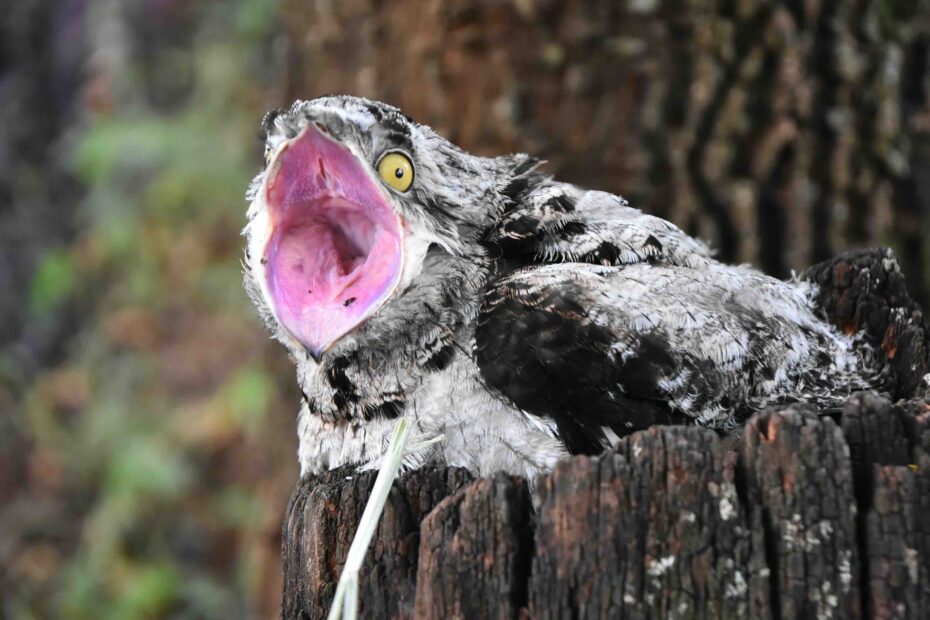In the avian world, the Nyctibiidae family, commonly known as the Potoos or Nightjars, is shrouded in mystery and fascination. These nocturnal birds, with their unique behaviors and characteristics, have intrigued birdwatchers and scientists alike. Let’s explore the 10 captivating facts about nyctibiidae birds that are sure to enchant everyone from casual readers to avid ornithologists.
1. They are Masters of Camouflage
One of the most striking aspects of nyctibiidae birds is their exceptional ability to camouflage. Their plumage closely resembles the bark of trees, allowing them to blend seamlessly with their surroundings. This natural disguise protects them from predators and aids in hunting.
2. A Diverse Family with Unique Features
The Nyctibiidae family comprises several species, each with distinctive features. Ranging from the Great Potoo to the Common Potoo, these species vary in size and coloration but share common characteristics like large heads, wide mouths, and cryptic plumage.
3. They Are Nocturnal Hunters
Nyctibiidae birds are nocturnal, meaning they are most active during the night. They hunt for insects, catching their prey mid-flight with their large mouths. This nocturnal behavior is a defining trait of the family.
4. They Have Eerie Vocalizations
The calls of nyctibiidae birds are often described as haunting or eerie. These vocalizations, which can vary from low wails to loud shrieks, have contributed to the mystique surrounding these birds and have even become part of local folklore in areas where they live.
5. They Know The Art of Remaining Motionless
Nyctibiidae birds have an incredible ability to remain motionless for extended periods. This behavior, combined with their camouflaged plumage, makes them nearly invisible to both predators and human observers, often leading to the misconception that they are rare.
6. They are Solitary and Elusive
These birds are generally solitary and elusive, making them difficult to study in the wild. Their secretive nature and preference for dense forest habitats contribute to the limited understanding of their behavior and ecology.
7. They Have Unique Roosting Habits
Nyctibiidae birds roost during the day, often perching on tree branches in a vertical position. This posture, along with their camouflaged appearance, makes them look like an extension of the branch, further aiding in their concealment.
8. They Have Mysterious Breeding and Nesting Behaviors
The breeding and nesting behaviors of nyctibiidae birds are not well-documented. However, it’s known that they lay their eggs in simple nests, often in depressions on tree branches, and exhibit strong parental care.
9. Distribution and Habitat
Nyctibiidae birds are found primarily in Central and South America, inhabiting a range of forest environments. Their habitat preferences vary among species, but they generally favor areas with dense canopy cover.
10. Some of Them face Threats
While some nyctibiidae species are abundant, others face threats from habitat loss and environmental changes. The conservation status of these birds varies, highlighting the need for continued research and habitat preservation.
Nyctibiidae birds, with their unique adaptations and behaviors, are a fascinating subject in the world of ornithology. From their extraordinary camouflage to their nocturnal lifestyles, these birds showcase the incredible diversity of the avian world. Understanding and appreciating nyctibiidae birds is crucial, not only for bird enthusiasts but also for the broader efforts in conserving our planet’s biodiversity.
FAQs on Nyctibiidae Birds
- What are Nyctibiidae birds?
- Nyctibiidae birds, commonly known as Potoos or Nightjars, are a family of nocturnal birds known for their unique camouflage and haunting calls. They are characterized by their large heads, wide mouths, and cryptic plumage that helps them blend into their forest environments.
- How do Nyctibiidae birds camouflage themselves?
- Nyctibiidae birds have plumage that closely resembles the bark or leaves of trees. This natural camouflage, along with their ability to remain motionless for extended periods, allows them to hide from predators and remain undetected during the day.
- What do Nyctibiidae birds eat?
- Nyctibiidae birds are primarily insectivores. They catch their prey in flight during the night, using their large mouths to snatch up insects like moths, beetles, and other flying insects.
- Where can you find Nyctibiidae birds?
- Nyctibiidae birds are predominantly found in the forests of Central and South America. Their habitat includes a range of forest environments, from rainforests to drier wooded areas, where they can effectively camouflage and hunt.
- Are Nyctibiidae birds solitary?
- Yes, Nyctibiidae birds are generally solitary creatures. They are known for their elusive and secretive nature, which, combined with their effective camouflage, makes them challenging to spot in the wild.
- What is unique about the Nyctibiidae birds’ calls?
- The calls of Nyctibiidae birds are distinctive and often eerie. These vocalizations vary among species but are typically haunting and can carry over long distances, contributing to the birds’ mystique and folklore in their native regions.
Image courtesy: https://en.wikipedia.org/wiki/Nyctibius
